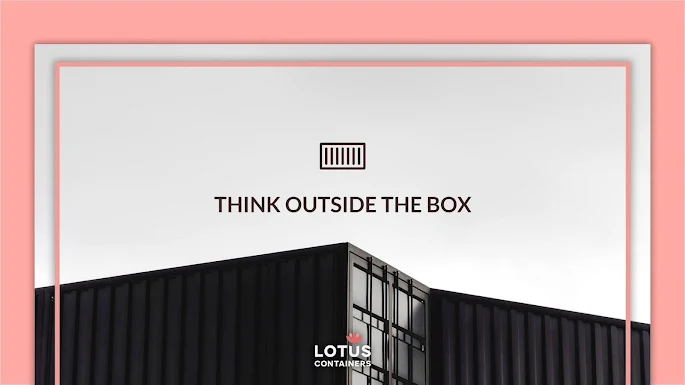Things to look Outside the Box before you Buy Shipping Containers | LOTUS Containers
In another article, we had talked about important things to look inside a container box. Here we will be talking about the things to look
outside the container box before making a final purchase. Container buying has
always been one of the most arduous and daunting tasks. This is mostly because
you have to keep a keen eye on every minute thing. Looking outside the box
does not mean looking just at its exterior but every factor- from the look, strength
to papers, everything.
LOTUS Containers has created this mini-guide to help you
with every necessary detail that you must keep a note of while signing a final
deal with your supplier. Whether you are buying for freight forwarding, storage
purpose, or building homes- the below point will come to be helpful every time.
Alignment: Shipping containers are rectangular boxes that can be
stacked on top of each other to be stowed to acquire the minimum space
available. For that, a container needs to be symmetrically rectangular. Check
whether the walls of the box make an angle of 90 degrees with the ground or
not. A box with even the slightest bend in walls is considered inappropriate.
It should stand straight on the ground or perpendicular to the ground.
Types: Before heading towards a supplier, you should know what
type of cargo you’re going to ship in that. Once you know the exact type of
cargo, you can decide the type of containers you should
go for. Since every cargo type has a specific container- like you can’t ship
fresh fruits in a dry van without a refrigeration unit.
Depending upon the cargo type, you can ask your supplier
to provide the right type of boxes. This not only applies to shipping. Even if
you want them for storage or building purposes, you should be precise about
their types.
Size: Size or dimension plays an important role in deciding
the right container box. Shipping container comes in different dimensions- from
8ft, 10ft, 20ft, 40ft, 45ft, 48ft to 53ft. Buying a small container for a large
volume of goods or vice versa makes no sense. It’s important to inform your
supplier about the volume of goods you have to ship. Taking note of volume
size, it will suggest you the right box.
For building purposes too, you need to be accurate about
the dimensions. Cargotecture companies often advise for 20ft to 40ft or 45ft
high cube boxes as it allows for easy modification. Moreover, these containers
are readily available. Otherwise extreme dimensions are available to only a few
suppliers.
Dents and Patches: Dents and patches are usually seen at the outer body of
the container. This is because the outer body is mostly exposed to the external
environment encountering harsh weather during the transition. If you are buying used containers then you can compromise
on a little number of patches or a few dents (but make sure the box still
possesses wind and watertight quality). You should also climb a ladder and take
a look at the roof.
Look for dents in the roof that can accumulate water and
eventually turn into a rust spot. These can eventually develop into a hole.
While the new box needs to be completely damage-free. A
small sign of dent should raise suspicion in your mind because that’s not what
a new container looks like. Therefore, it’s required that you inspect the
container by going through every corner and side.
Check for Doors: Never forget to inspect the doors. Inspection should be
strict if you are buying a double door or side door.
Both of these types have their one complete side in form of a door. The loose
door may be destructive for your cargo as it would lead to the spillage of the
entire goods. Other containers have just a single door at one of the sides.
Open the doors and make sure they swing open and close smoothly. Check the
mechanism of hinges and handle. The most commonplace for corrosion and rust is
at the bottom of the door.
Port Location: It is often advised to hire containers from a supplier
that has a worldwide existence. It could make your product available at any
geographical location. You should find out the list of all the container
suppliers near to your location or whoever is willing to deliver in your area.
If you are going to use your container for shipping purposes, you will most
likely want it at the port. In that way, you can look for suppliers near the
port area. Also, ask if the delivery services are included in their package or
they ask customers to arrange for transportation. At LOTUS Containers,
we help you with intermodal transportation services by arranging the most appropriate mode of
transportation.
CSC Certification: The CSC (Convention for Safe Containers) plate is one of
the most important things your container should have. The plate incorporates
design, requirements, functionality, measurement of weight, volume, and
resistance to the forces box are subjected to when they are moved on sea or
land. The CSC plate is fastened to every shipping
container at the time of manufacture. The supplier will either provide a CSC
plate that is riveted to the outside of the left door or else a certificate on
paper.
Conclusion
If you are looking for good quality shipping containers,
be cautious, and carry out your due diligence before making a purchase. Ask questions
from your supplier if you need information and make yourself aware of what a
good quality used container looks like.

Comments
Post a Comment